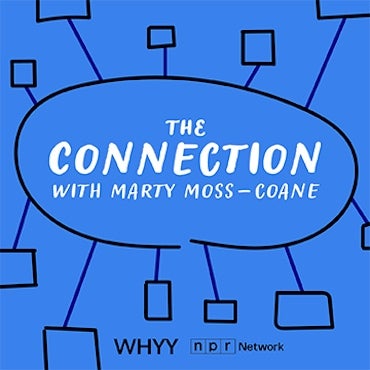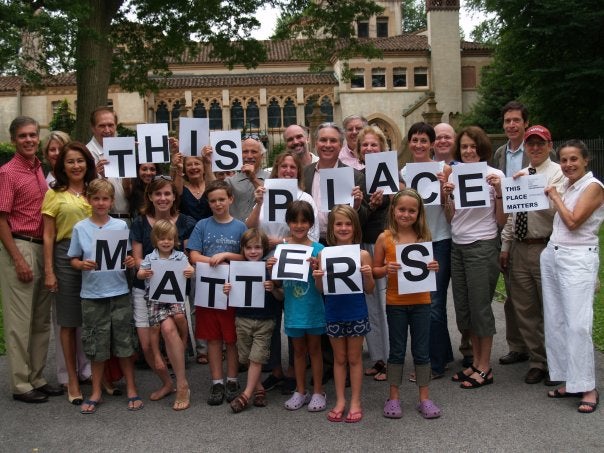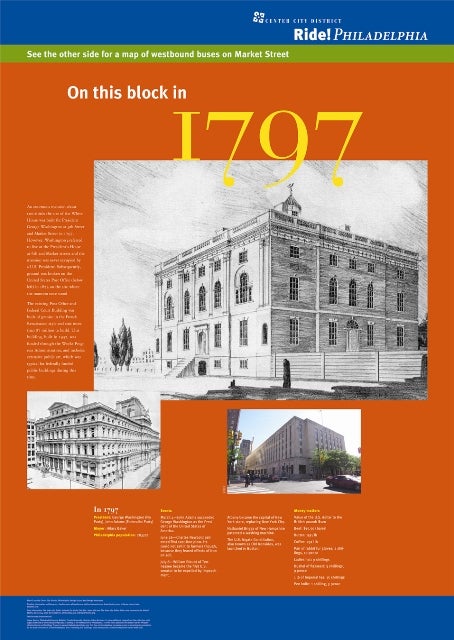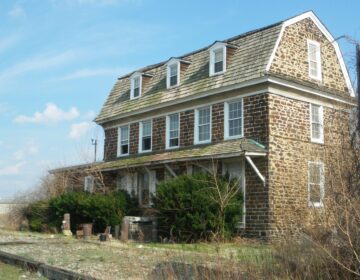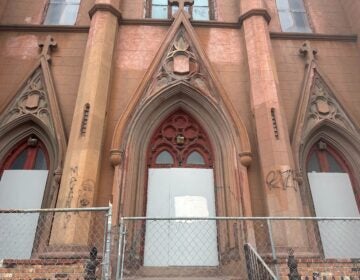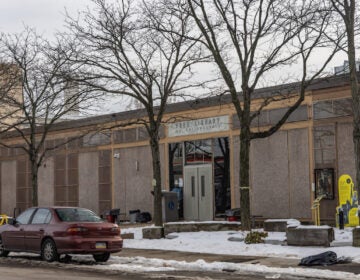Preservation Awards: restorations, programs and campaigns
May 5, 2010
By Alan Jaffe
For PlanPhilly
Examples of excellence in historic preservation come in many shapes. They can be public landmarks, private homes, or major institutions. They can also come in the form of individual and community action, educational presentation and artistic endeavor.
When the 17th annual Preservation Achievement Awards were presented by the Preservation Alliance for Greater Philadelphia Wednesday, May 12, the recipients were honored in a wide range of categories. Most have finished remarkable restorations. Some have completed the first phases of their projects.
One group wasn’t able to save a cherished building, but managed to mobilize a community around its cause.
On Oct. 1, 2009, a six-month struggle on the Main Line to preserve La Ronda ended with the demolition of the 1929 Spanish Gothic mansion designed by Addison Mizner. The owner of the property is erecting a new home on the site, and remnants of the lost Bryn Mawr masterpiece – doors, stained glass windows, archways, railings, stone finials and capitals – are being sold at online auctions.
The Preservation Alliance, however, will recognize the effort to rescue the building with the presentation of its Community Action Award to Save La Ronda Now!, the Lower Merion Conservancy, Lower Merion Township and its historical society.
These groups “did not achieve saving the building, which is deeply unfortunate,” said Lori Salgonicoff, historic preservation coordinator for the conservancy. “But the campaign did create an unusual coalition of parties with disparate interests, who found a similar purpose in trying to save this property.”
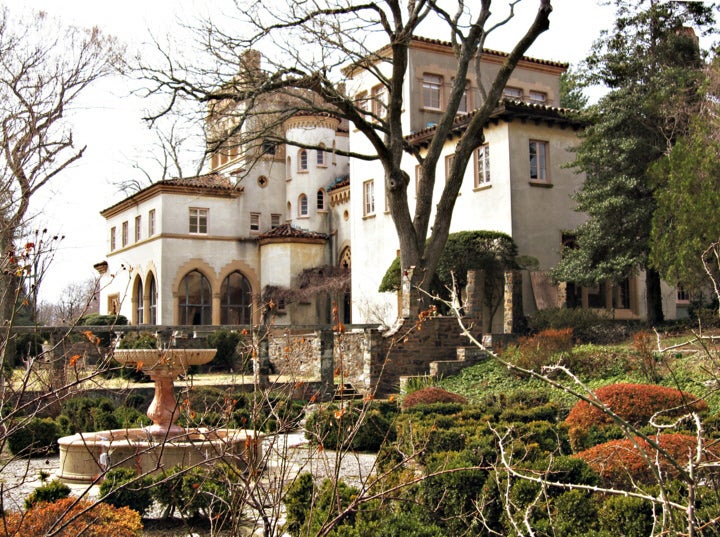
The 1929 Bryn Mawr mansion, La Ronda, was demolished last October, but the fight to preserve it mobilized the community and sparked a new appreciation for Lower Merion’s historic and architectural treasures.
Save La Ronda! began as a small community activist group that used a website and Facebook page to enlist support from individuals from Bryn Mawr to Palm Beach, where Mizner did much of his work. The conservancy and other regional, state and national preservation agencies used their resources to try to satisfy the owner and buyer of the property. When a possible answer was found – to move the mansion to a neighboring site – the township board of commissioners and planning staff worked to make the process possible, Salgonicoff said. “That was a unique thing – the coming together of different interests” to find a workable solution.
The effect of that effort is still being felt in Lower Merion. “There is a better understanding that many things are not as well protected in the township as one may assume. Just because it is there — and magnificent — doesn’t mean it always will be. People will take a closer look now,” Salgonicoff explained.
“The awakening that happened around La Ronda made it an easier conversation. People understand in a different way why it’s important to think of historic architecture as a shared treasure in addition to being a privately owned resource.”
A handful of properties have been added to the township’s historic register since La Ronda came down, and dozens of other sites have been identified for elevated listing for protection, Salgonicoff noted.
The significance of the Preservation Alliance award to the La Ronda effort is that it “celebrates what was good” about that battle. “Neighborhoods do wish to have proper protection and recognition” for their historic and architectural resources, Salgonicoff said. “This award is wonderful because it is unusual to honor an effort that failed. It highlights that something was achieved that was more important than the loss of the building.”
Bus Stop Revelations
This year the Preservation Alliance presented a Grand Jury Award to an educational effort by the Center City District to raise appreciation for the history and evolution of the Philadelphia cityscape. The program, “Ride! Philadelphia,” began in 2006 as a way to assist visitors and regular commuters by posting large transit maps on bus shelters. “But what do we put on the other side?” project manager David Kanthor and his colleagues wondered. “We realized this was a great opportunity to educate riders about the history of Philadelphia.”
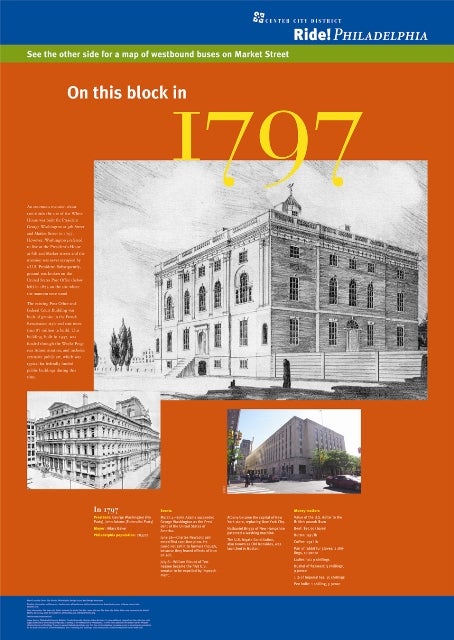
Anyone who strolls past one of the 72 locations on Broad, Market, Arch, Chestnut and Walnut Streets and JFK Boulevard, from 4th to 22nd Streets, can now benefit from the presence of the historic photos, artistic renderings and descriptions found on the bus shelter walls. They provide the architectural and social history of nearby structures, and sometimes of buildings that are no longer there.
Most of the images were provided by the Athenaeum, Phillyhistory.org and Temple Urban Archives. “The greatest challenge was finding a photo from the past that would draw visitors and viewers,” Kanthor said. “It wasn’t easy for every location. Some areas are more residential, and there wasn’t always a great photo of a skyscraper. We also needed behind-the-scenes information to make it relevant. We wanted to promote urban planning that was going on at that time, or great architecture.”
One of Kanthor’s favorite finds was the drawing of a building that has been replaced by a parking garage. The Art Club of Philadelphia, at Broad and Chancellor Streets, was designed by Frank Miles Day in 1889 and contained exhibition galleries, parlor, library, bedrooms, café and billiard room. It was described in the New York Times as one of the most beautiful clubhouses in the country. The building was demolished in 1976.
“The renderings of the clubhouses were so amazing, and the story behind it was so sad,” Kanthor said. “It had to be torn down because of the maintenance costs.”
The Best of Old and New
A Grand Jury Award also went to a combination restoration/construction project by Ann Beha Architects on the University of Pennsylvania campus. Penn’s Music Building, at 34th Street and Chancellor Walk, involved preserving the historic features of the Italianate building erected in 1892 by Cope and Stewardson and adding a harmonious new structure. The project’s challenges and achievements came on several levels.

The Music Building on the Penn campus is a harmonious blend of historic restoration and new construction.
One of the primary concerns for the Music Building was acoustics, explained university architect David Hollenberg. The most demanding requirements were addressed in the new section, which houses classrooms, practice rooms and recording studios. The old building is now mainly faculty offices. But both sit on a street that leads to the emergency room of one of the region’s busiest hospitals. The use of high-performing interior storm windows and sophisticated construction involving thick floors and “massive sandwiches of air space” did the trick. “It’s astonishing to me how quiet it is now with ambulances going by with sirens whaling.”
Other byproducts of the Music Building project resulted in the removal of some adjacent “utilitarian, ugly buildings,” Hollenberg said, and the development of a new skill set for the conservators: exterior cleaning. The old building had never been cleaned, and close examination revealed beautiful brick and terracotta beneath the “solid black” surface grime. The team that cleaned the Music Building used their newly learned skills in restoring the nearby Morgan Building and “now both look sensational,” Hollenberg said.
The project on 34th Street also allowed the practice of Penn’s philosophy of “doing the best contemporary buildings of our time” rather than following a past campus style. The adjacent lobbies of the buildings present the juxtaposition of contemporary design and what remained of the exposed brick and patina of the older building.
One other major concern for the university was achieving LEED Silver certification for the project, which it is pursuing for all new construction on the campus. “A great deal of energy was expended on energy performance,” Hollenberg said. “This project is a poster child for a big point we’re trying to make: That preservation and sustainability can be merged.”
Here’s a time-lapse view of the entire Music Building rehab and construction, through snow storms and budding trees.
Other Winners
The Preservation Alliance presented Special Recognition Awards to individuals and organizations at Wednesday’s luncheon.
The James Biddle Award for lifetime achievement in historic preservation will be given to Richard Moe, who is retiring after 17 years as president of the National Trust.

The Public Service Award for preservation in the public interest was presented to Councilman Bill Green, who introduced the bill that would list interior spaces on the Philadelphia Register of Historic Places. The Board of Directors Award for exceptional stewardship of historic properties will go to the Fairmount Park Historic Preservation Trust. In addition to the La Ronda coalition, the Community Action Award will be presented to the Whitemarsh Foundation, Peter and Bonnie McCausland, and Edith R. Dixon and Ellin Dixon Miller for the preservation of Erdenheim Farm.
A Special Recognition honors the memory of Hal Wheeler, who worked on a development project that would have included the restoration of the Boyd movie palace before his death in January.
The 2010 AIA Philadelphia Landmark Building Award was presented to Tinicum Township for the preservation of the Lazaretto Quarantine Station. The Henry J. Magaziner EFAIA Award went to Hidden City Philadelphia, for its innovative program that combines artistic performances and exhibitions at historic sites throughout the city.
Grand Jury Awards were presented for the following preservation work:
Restoration of 814 Pine Street, Philadelphia; William Vessal.
Interior restoration of the Academy of Music Ballroom; the Philadelphia Orchestra.

The Academy of Music Ballroom is one of the most magnificent interior restoration projects of the year.
Restoration of Clarke Residence, Haverford, Pa.; Julie and James Alexandre.
Restoration of Fleisher Art Memorial Window Project, Philadelphia; Fleisher Art Memorial.
Restoration of the Franklin Institute’s Franklin and Jordan Hall, Philadelphia; Franklin Institute.
Renovation of Friends Center, Philadelphia; Friends Center Corporation.
Restoration and adaptive use of Germantown White House, Philadelphia; Independence National Historical Park.
Adaptive use of the Girard Estate Warehouses, Philadelphia; 20-30 North Front Street LLC.
Education program, Hammers & Pens: Craft a New Nation, Philadelphia; Philadelphia Society for the Preservation of Landmarks.
Adaptive use, Kimpton Hotel Palomar, Philadelphia; Klimpton Hotels and Restaurants.
Restoration and adaptive use of Little Abington Meetinghouse, Jenkintown, Pa.; Abington Township.
Restoration of the Mask and Wig Club, Philadelphia; Mask and Wig Club.
Restoration of Pi Lambda Phi Fraternity House, Philadelphia; 3912 Spruce Street Corporation.
Reconstruction of Rittenhouse Plaza Arch and Gate, Philadelphia; Rittenhouse Plaza Inc.
Restoration of Rodin Museum and Meudon Monument, Philadelphia; Philadelphia Museum of Art.
Restoration of Rose Valley Farm, Rose Valley, Pa., Geoff and Saundra Shepard.
Restoration of St. Luke and The Epiphany, Philadelphia; The Church of St. Luke and The Epiphany.
Rehabilitation and new construction, Spring Garden Community Revitalization, Phase 2, Philadelphia; Spring Garden Community Development Corporation, Philadelphia Housing Authority, and Michaels Development Company.
Interior restoration of Strawbridge & Clothier Department Store, Philadelphia; Pennsylvania Real Estate Investment Trust.

The restoration of the Strawbridge & Clothier building included polishing the floor tiles and elevator doors, cleaning the paintings, and moving a wall back in the first-floor foyer.
For more information on the Preservation Alliance Awards, sponsorship and registration, go to www.preservationalliance.com.
Contact the writer at alanjaffe@mac.com.
WHYY is your source for fact-based, in-depth journalism and information. As a nonprofit organization, we rely on financial support from readers like you. Please give today.
